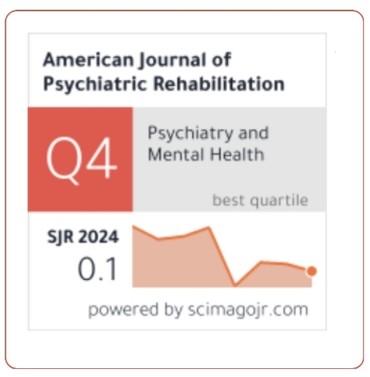Diagnostic Accuracy Of MRI In SLAP Tears: A Radiological-Surgical Comparative Study
DOI:
https://doi.org/10.69980/ajpr.v28i1.178Keywords:
SLAP tears, MRI, diagnostic accuracy, shoulder instability, arthrographyAbstract
Repeated overhead movements and traumatic injuries of the shoulder cause Superior Labral Anterior-Posterior (SLAP) tears that cause shoulder pain, instability and decreased range of motion. Middle-aged patients between 40 to 50 years old have difficulty diagnosing SLAP tears because their symptoms are similar to other shoulder conditions. MRI is used to diagnose SLAP tears because it provides detailed images that can differentiate between partial and full-thickness tears. MRI technology allowed scientists to study a 42-year-old patient who may have SLAP tears. Surgical examination confirmed MRI findings, with the patient having a type II SLAP tear with detached labrum. MR has been used to detect SLAP tears with 92% sensitivity and specificity at a sensitivity of 92% specificity of 89%. In this particular medical case, medical professionals are unable to use MRI because of standard treatment limitations and are therefore forced to use MRI for vital clinical decision making. MRI is the best diagnostic method for middle-aged patients with SLAP tears, according to the research.References
1. Boutin, R. D., & Marder, R. A. (2018). MR Imaging of SLAP Lesions. The open orthopaedics journal, 12, 314–323. https://doi.org/10.2174/1874325001812010314
2. Chandarana, H., Wang, H., Tijssen, R. H. N., & Das, I. J. (2018). Emerging role of MRI in radiation therapy. Journal of magnetic resonance imaging : JMRI, 48(6), 1468–1478. https://doi.org/10.1002/jmri.26271
3. Charles, M. D., Christian, D. R., & Cole, B. J. (2018). An Age and Activity Algorithm for Treatment of Type II SLAP Tears. The open orthopaedics journal, 12, 271–281. https://doi.org/10.2174/1874325001812010271
4. Kütük, A. T., Kanatli, U., Ataoğlu, M. B., Ayanoğlu, T., Özer, M., & Çetinkaya, M. (2020). The Correlation of the SLAP II Lesion Findings Between Physical Examination, Magnetic Resonance Imaging, and Arthroscopic Surgery. Indian journal of orthopaedics, 55(2), 443–448. https://doi.org/10.1007/s43465-020-00185-5
5. Mathew, C. J., & Lintner, D. M. (2018). Superior Labral Anterior to Posterior Tear Management in Athletes. The open orthopaedics journal, 12, 303–313. https://doi.org/10.2174/1874325001812010303
6. Murakami, A. M., Kompel, A. J., Engebretsen, L., Li, X., Forster, B. B., Crema, M. D., Hayashi, D., Jarraya, M., Roemer, F. W., & Guermazi, A. (2018). The epidemiology of MRI detected shoulder injuries in athletes participating in the Rio de Janeiro 2016 Summer Olympics. BMC musculoskeletal disorders, 19(1), 296. https://doi.org/10.1186/s12891-018-2224-2
7. Phillips, J. C., Cook, C., Beaty, S., Kissenberth, M. J., Siffri, P., & Hawkins, R. J. (2013). Validity of noncontrast magnetic resonance imaging in diagnosing superior labrum anterior-posterior tears. Journal of shoulder and elbow surgery, 22(1), 3–8. https://doi.org/10.1016/j.jse.2012.03.013
8. Popp, D., & Schöffl, V. (2015). Superior labral anterior posterior lesions of the shoulder: Current diagnostic and therapeutic standards. World journal of orthopedics, 6(9), 660–671. https://doi.org/10.5312/wjo.v6.i9.660
9. Pouliart, N., Doering, S., & Shahabpour, M. (2016). What can the radiologist do to help the surgeon manage shoulder instability? Journal of the Belgian Society of Radiology, 100(1), 105, 1-15. https://doi.org/10.5334/jbr-btr.1227
10. Rixey, A., Rhodes, N., Murthy, N., Johnson, M., Larson, N., & Ringler, M. D. (2023). Accuracy of MR arthrography in the detection of posterior glenoid labral injuries of the shoulder. Skeletal radiology, 52(2), 175–181. https://doi.org/10.1007/s00256-022-04165-8
11. Schwartzberg, R., Reuss, B. L., Burkhart, B. G., Butterfield, M., Wu, J. Y., & McLean, K. W. (2016). High Prevalence of Superior Labral Tears Diagnosed by MRI in Middle-Aged Patients With Asymptomatic Shoulders. Orthopaedic journal of sports medicine, 4(1), 2325967115623212. https://doi.org/10.1177/2325967115623212
12. Sheridan, K., Kreulen, C., Kim, S., Mak, W., Lewis, K., & Marder, R. (2015). Accuracy of magnetic resonance imaging to diagnose superior labrum anterior-posterior tears. Knee surgery, sports traumatology, arthroscopy : official journal of the ESSKA, 23(9), 2645–2650. https://doi.org/10.1007/s00167-014-3109-z
13. Symanski, J. S., Subhas, N., Babb, J., Nicholson, J., & Gyftopoulos, S. (2017). Diagnosis of Superior Labrum Anterior-to-Posterior Tears by Using MR Imaging and MR Arthrography: A Systematic Review and Meta-Analysis. Radiology, 285(1), 101–113. https://doi.org/10.1148/radiol.2017162681
14. Varacallo, M. A., Tapscott, D. C., & Mair, S. D. (2023, August 4). Superior labrum anterior posterior lesions. StatPearls - NCBI Bookshelf. https://www.ncbi.nlm.nih.gov/books/NBK538284/
Downloads
Published
Issue
Section
License
Copyright (c) 2025 American Journal of Psychiatric Rehabilitation

This work is licensed under a Creative Commons Attribution 4.0 International License.
This is an Open Access article distributed under the terms of the Creative Commons Attribution 4.0 International License permitting all use, distribution, and reproduction in any medium, provided the work is properly cited.









